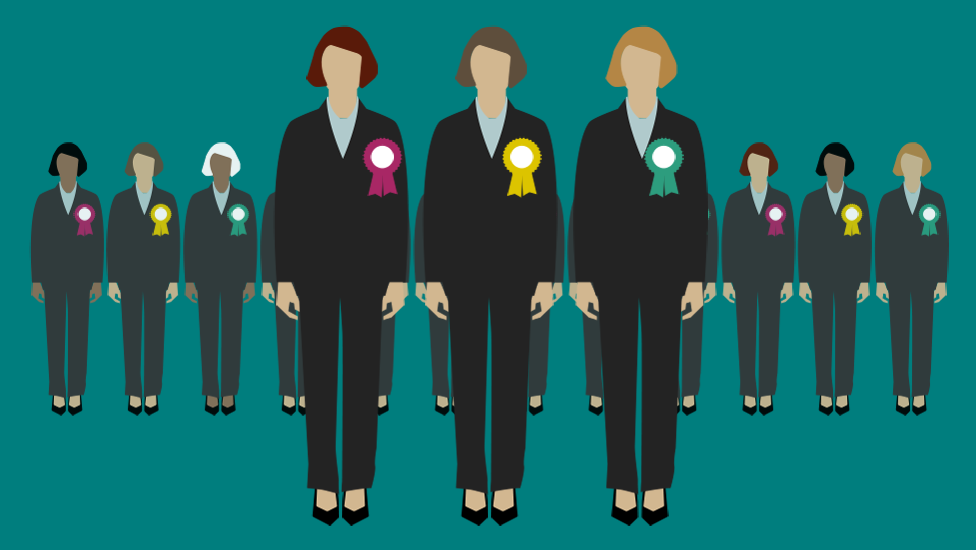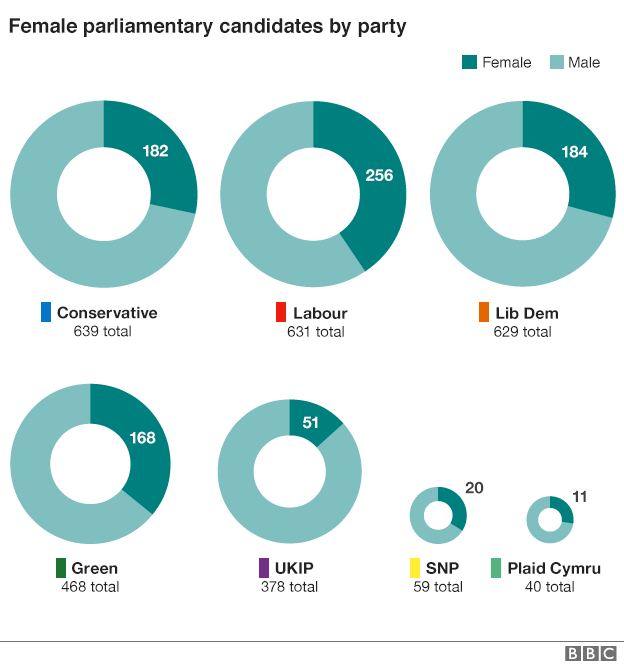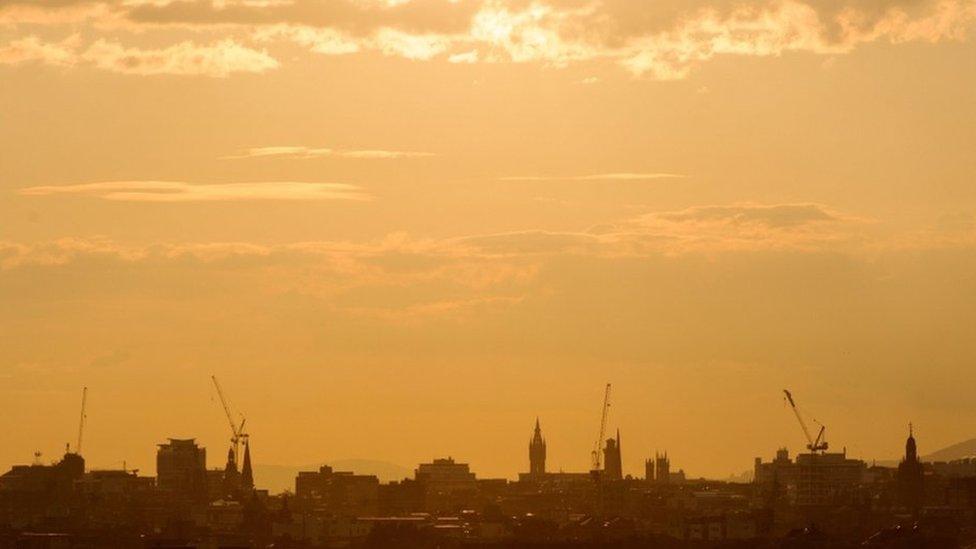General election: Why 7.5m people can't vote for a woman
- Published

More than 100 constituencies across the UK have no female candidates on the ballot, BBC research has learned.
This means about 7.5 million people will not be able to vote for a woman.
The Scarborough and Whitby constituency has the longest men-only slate of candidates, with a total of eight male hopefuls.
Maidenhead has the biggest gap between the number of male and female candidates - with 11 men seeking election compared with two women.

Constituencies where no female candidates have stood since boundary changes in 2010 (including by-elections)

Sorry, your browser cannot display this content.
There are six seats in Wales and five seats in Scotland without a woman on the ballot.
The other 93 constituencies are all in England, as Northern Ireland is the only nation in the UK to have a female candidate in every constituency.
Within England, there are big regional differences in the number of seats being contested by at least one woman.

The Conservatives are the only party to campaign in all four nations of the UK
London comes closest to providing the option, with only 8% of seats not meeting the criteria - while in the West Midlands more than a quarter of all seats being contested lack female representation.
Northern Ireland also has the highest average for female candidates per seat - with 34 standing across the 18 seats available.
Overall, the 104 seats without female candidates is a fall from 2015 - then there were 124 seats across England, Scotland and Wales with no female contenders.

The Conservatives, Labour, Liberal Democrats and SNP are fielding female candidates in Glasgow Central
But there is one seat where it is impossible to elect a man to Parliament: Glasgow Central has four names on the ballot list - and they are all female.
The last time an all-female line-up was reported was in the 1992 contest in Lewisham Deptford between three women.
For a full list of candidates in all seats, you can visit the BBC's election page and find the constituencies there.